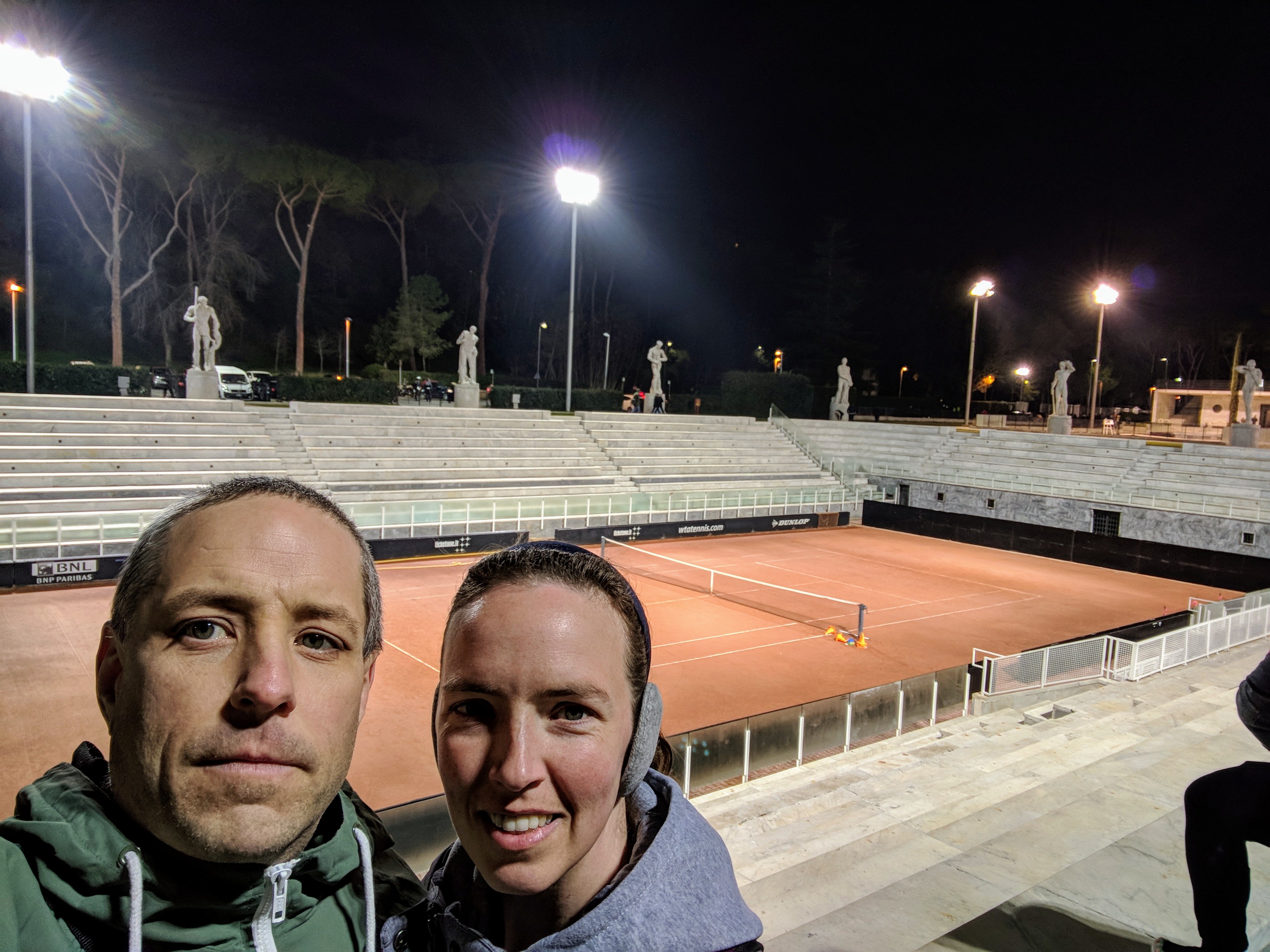Vatican Museums
Tue Dec 05, 2017 2:52 pmWe continued our tour of Vatican Museums in the Renaissance Wing.
Think about the drama being played out in the fierce competition between Michelangelo painting the ceiling of the Sistine Chapel at the same time that Raphael was painting his frescos in the Raphael Rooms.
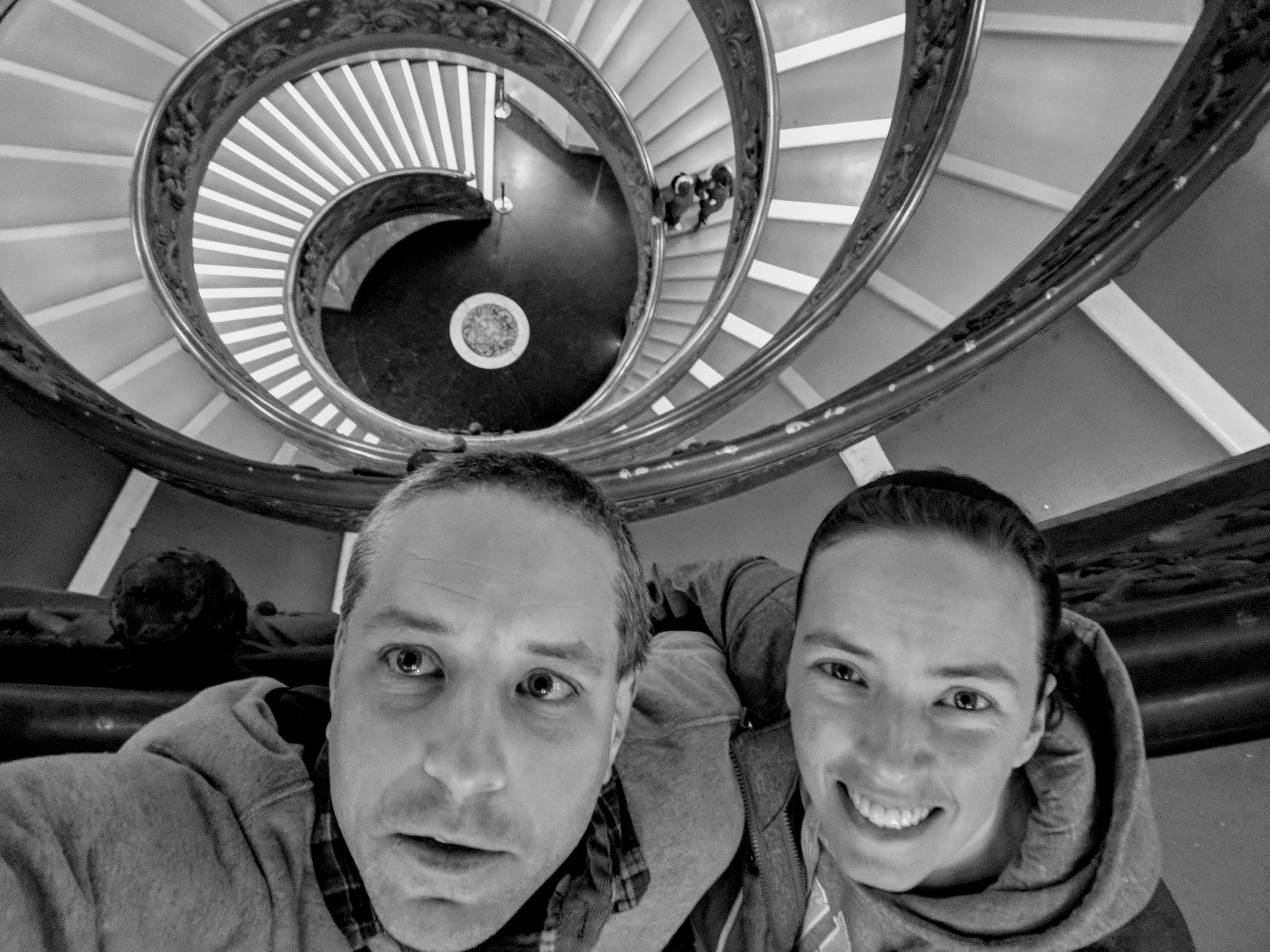
Bramante Staircase is a double helix spiral providing separate ramps for ascending and descending traffic.
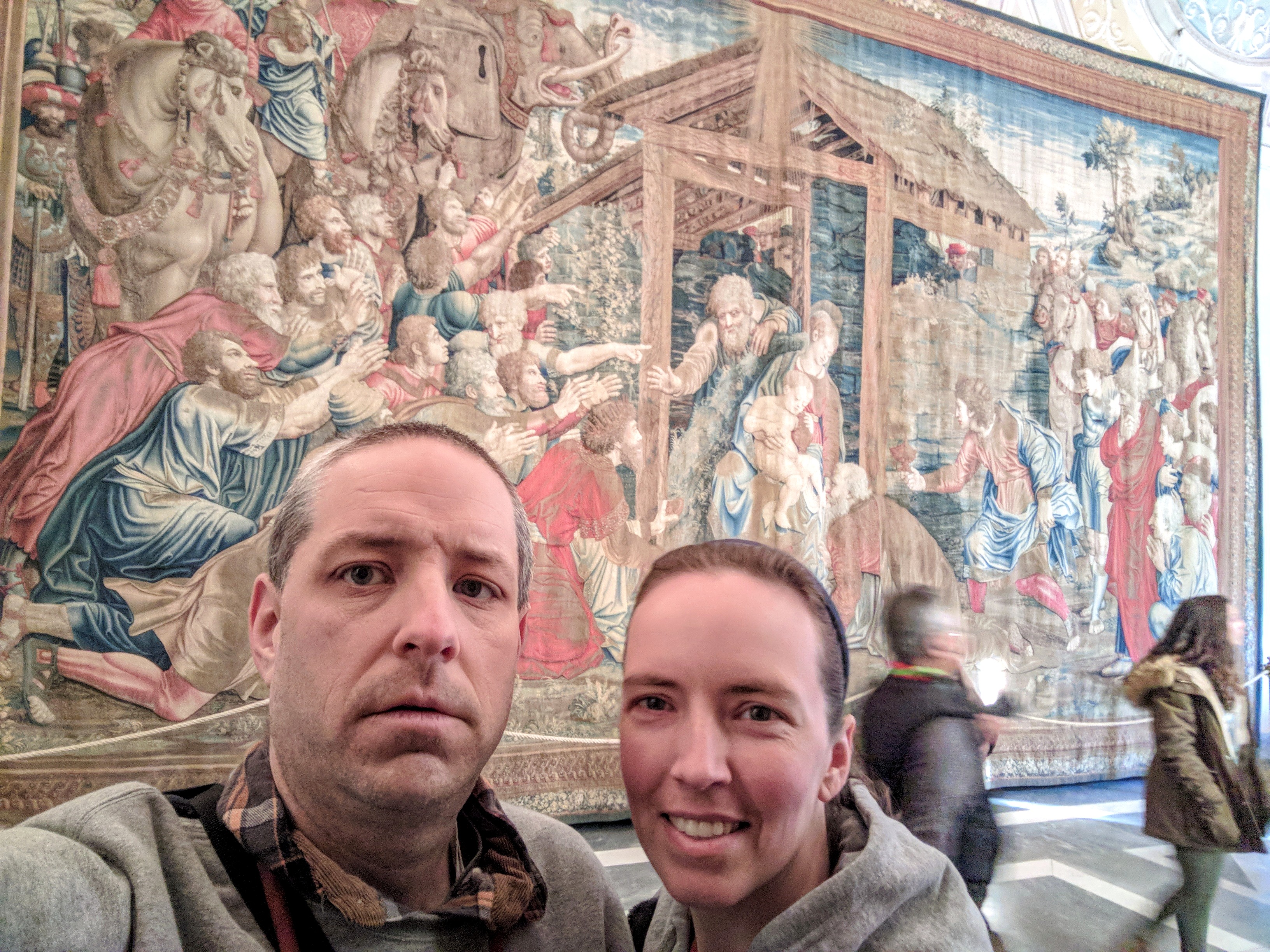
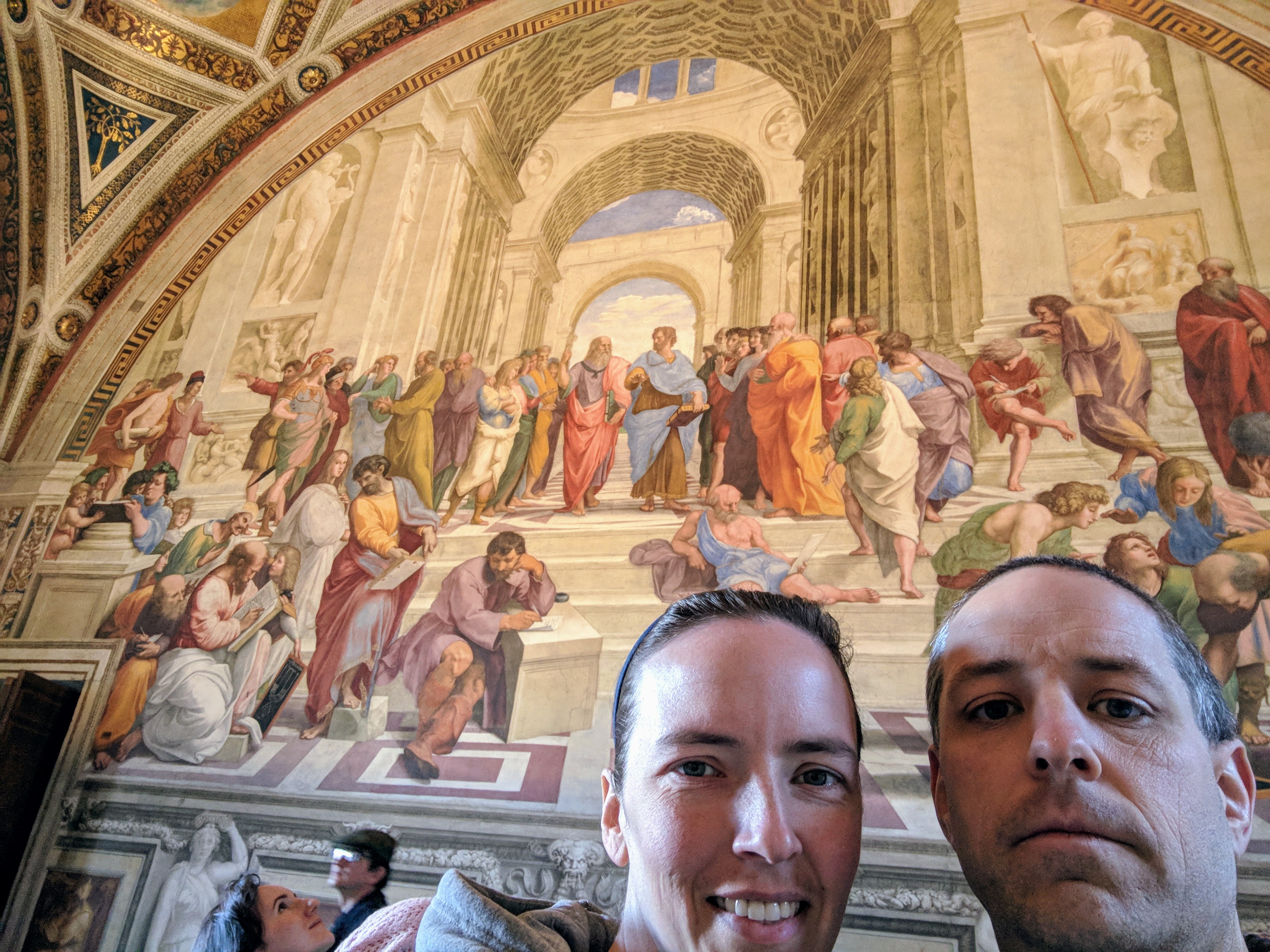
The School of Athens fresco is Raphael’s most famous work. Located in Raphael Rooms, as a fresco is painted directly on the wall and is therefore axiomatically in situ.
Together with Michelangelo, and Leonardo da Vinci, Raphael is one of the three masters of the High Renaissance, a movement which rediscovered the realism, perspective, proportionality, and skill of Ancient Greece and Rome. Raphael’s paintings are very, symmetrical.
In the center are Plato and Aristotle. Plato, a philosopher who literally founded a school in Athens, would have witnessed Athens Fall from the zenith of it’s empire, the so-called Delian League, its collapse at the end of the Peloponnesian War, from which it never recovered. Aristotle, a philosopher from even later in history, was actually a contemporary and tutor of Alexander The Great.
In the lower left corner, Pythagoras and Archimedes read a book together. Archimedes was a mathematician, physicist, engineer and inventor from Classical Greece. Pythagoras was an Ionian Greek, (i.e. from Anatolia, Samos specifically), philosopher from the early classical era, who promoted the idea that nature is geometric. Anatolia is also known as Asia Minor, where Turkey is today.
Front and center, Michelangelo is cast as Heraclitus. Also Ionian, from Ephesus, in the early-classical era, Heraclitus was a ascetic, misanthropic rationalist. Is this what Raphael thought of his fierce rival Michelangelo? Ephesus is interesting because in ancient times it was a port city, but silting has since filled in the harbor.
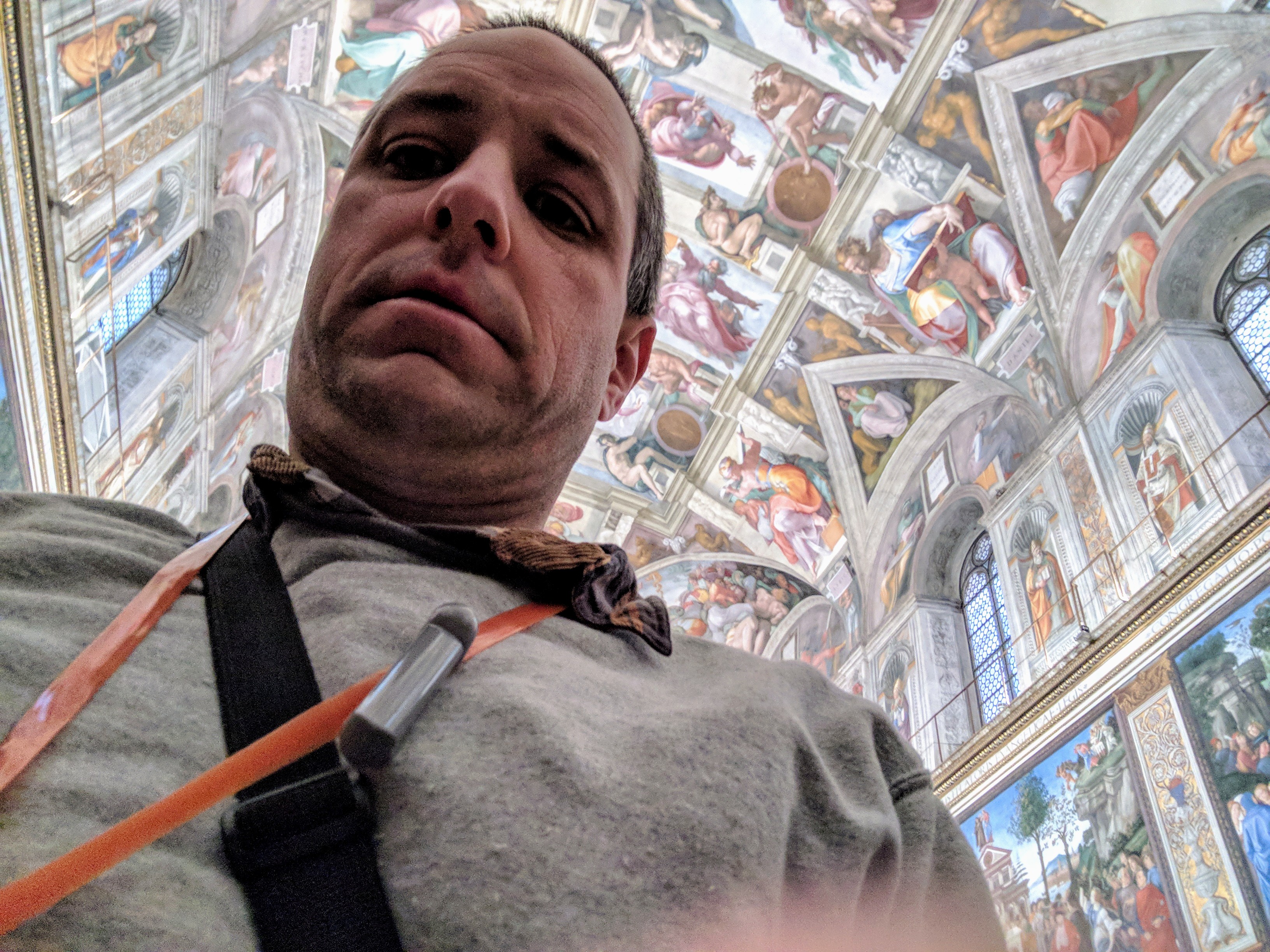
On the ceiling of the Sistine Chapel, Michelangelo painted the Biblical Narratives of Creation and The Flood. This is interesting because whatever catastrophe (such as a comet colliding with earth?) 13,000 years ago, that melted the three-mile-thick North-American Ice Sheet practically overnight, while wiping out all the Pleistocene megafauna, would have surely erased civilization from the face of the earth.
The depicted figures and scenes demonstrate the skill, perspective, detail, and anatomical correctness of Renaissance Art. However, in Mannerist style, the figures are also somewhat idealized.
Significantly for Michelangelo, who was more or less adopted by the Medici, this work was commissioned by Pope Julius II, and performed during the time that the Medici were exiled and cast out of Florence. Sistine Chapel is the Pope’s personal chapel.
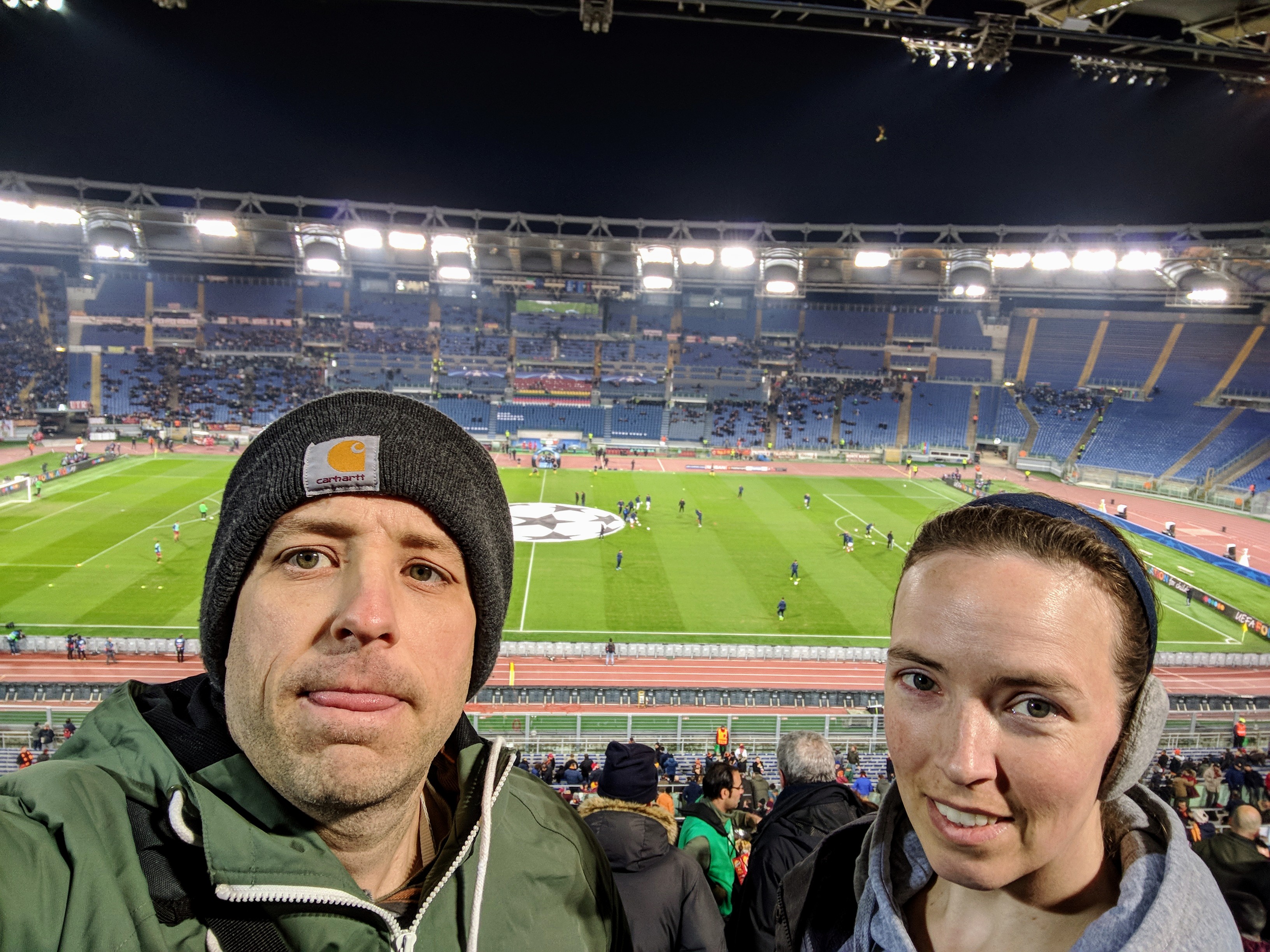
We attended a soccer match between AS Roma and FK Qarabag in Olympic Stadium on a cold Tuesday evening, and the fans were pretty chill.
The Roma Crest is interesting because it depicts infants Romulus (mythical founder of Rome) and his brother Remus being suckled by a she-wolf.
